My wife and I recently moved into a new house. After the seemingly endless paper chase was over and the euphoria of finally closing had waned a bit, it was then time to get down to the brass tacks: moving almost twenty years’ worth of accumulated things into the new house. As we were going through the process, I was stricken by some of the parallels to storage administration and how small actions can reap larger rewards in both space used and the cost of keeping items around.
Stale Volumes – Remind Me Again Why I Kept This Around
As we were sorting through things to be moved, I often paused to ask why I kept a particular item in the first place. Often it was a box of things that I thought I might need later, placed in the garage, then promptly forgot about. After that, the box was just there. I barked my shin on it in the dark and stumbled on it when I moved other things, but other than that it became just another part of the background.
This is often the case with stale volumes that occupy space on a storage array. Perhaps the administrator that was assigned a decommissioning task was distracted and didn’t fully complete the space reclamation. They may have been ad-hoc snapshots that were taken and then not cleaned up, or a project that was shut down midway. There are a multitude of reasons why the stale volumes could be there.
Reducing Unused Volumes
While unused volumes, other than the space they occupy, may seem benign, they increase the likelihood of making a mistake. Even a disciplined storage admin can misread a volume name and mask the wrong volume to a host or group of hosts or delete a volume with a similar name. Removing or reducing the number of unused volumes can reduce the potential for misconfiguration.
These unused volumes may also be part of a set of volumes that are being replicated or backed up. If they are being replicated, removing them can shorten the replication cycle, helping you better stay within SLA. If they are being backed up, removing them can shorten your backup window and save costs, whether you’re storing them in the cloud or backing up to tape and shipping them offsite.
How to Identify and Reclaim Unused Volumes
So how do you identify unused volumes? The first step is to identify volumes that haven’t been zoned and masked to hosts.
Doing this across multiple storage platforms can be a manual and time-consuming task. Some Storage Performance Management software, such as IntelliMagic Vision, compiles this information in a single report, accessible with a few mouse clicks. In Figure 1 you can see how IntelliMagic Vision identifies the volume, the storage system on which it resides, and the amount of allocated and utilized space as well as the tier on which the volume resides.
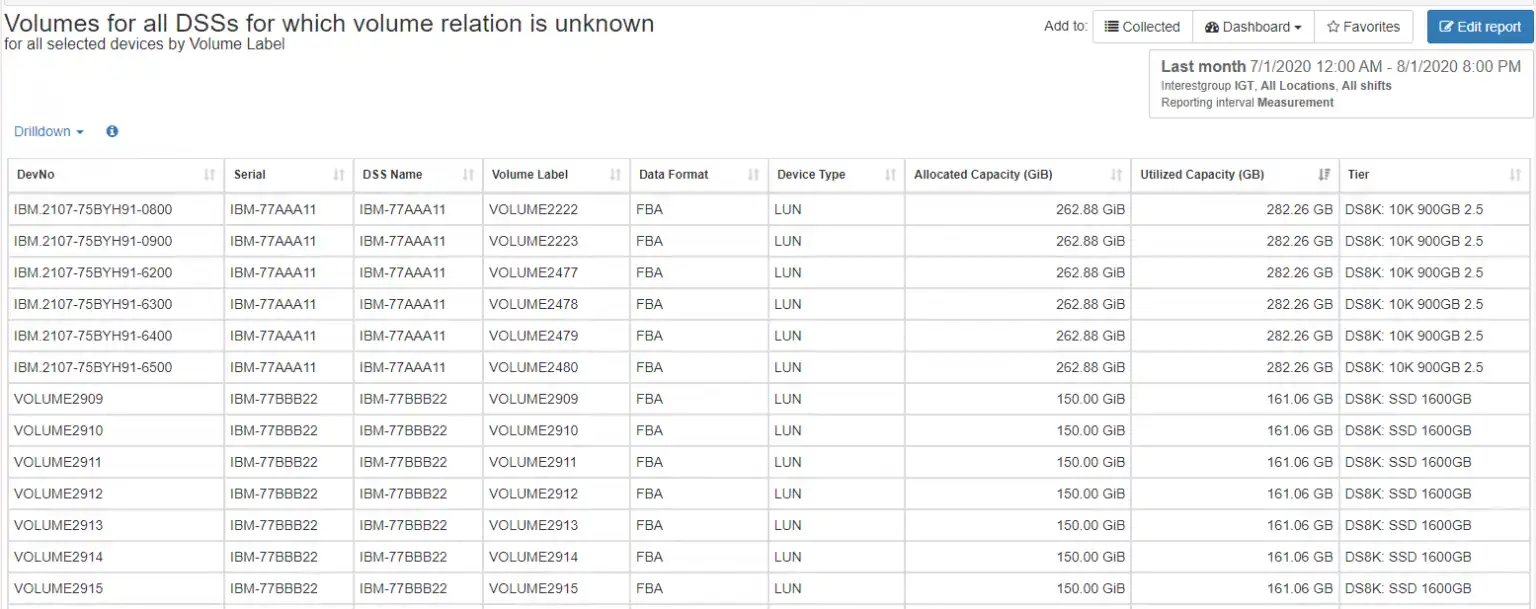
Figure 1: Volumes Not Assigned to a Host
Another opportunity for reclamation is volumes with very low or no IOPS. These may or may not be zoned and masked to a host. Volumes that are relatively idle are candidates for either storage in the cloud or for being backed up to external media and being stored offsite. They can also be moved to nearline disk as discussed in the next section.
To find these volumes with low-to-no IOPS, I typically look at the amount of IOPS for the volume over a period of time, usually for at least the last month. Since some operating systems periodically poll storage volumes with keep-alives, I usually look for volumes with less than two IOPS. This, too, can be a tedious task when looking at multiple storage arrays. Again, software can help here by easily taking a report for the volumes with the lowest I/O rate, filtering it for volumes with less than two IOPS, and setting the report for the time period you want to examine, such as the example with IntelliMagic Vision in Figure 2 below. You can then take the report, place it on a dashboard, and never be more than a few mouse clicks away from a current report.
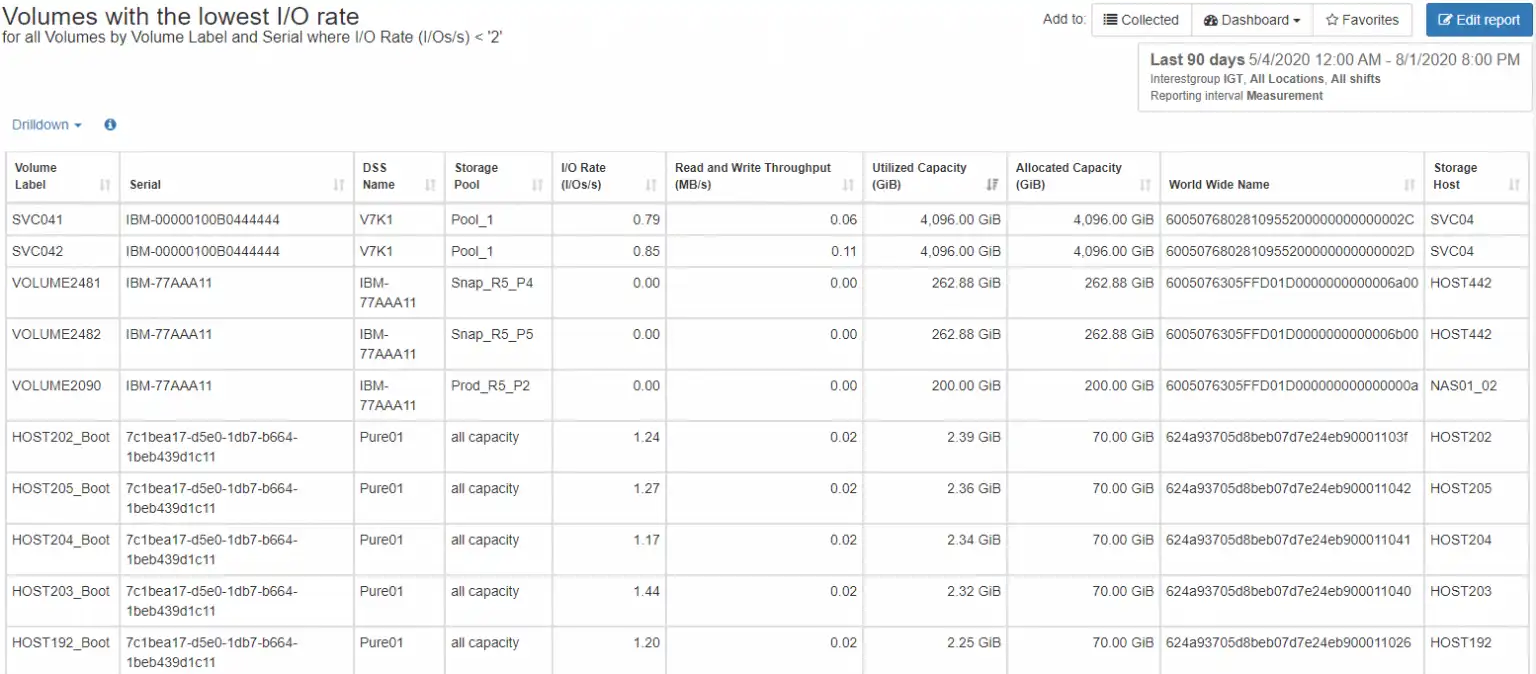
Figure 2: Volumes with Low or No IOPS
Where Should You Put Storage Volumes?
While my wife and I were deciding what to move and what to keep, we also had to decide where to put the things that we did want to keep after the move. Were these items that we used often and needed handy, things that we used less often that could be stored in the attic or garage, or things that we seldom needed that could be stored in a storage unit?
Volumes with low IOPS and Low Read Cache Miss Rate
Similarly, there are storage volumes stored on expensive flash media that might be more suitable for cheaper nearline spinning disks. These can be identified as volumes with very low IOPS and a low read cache miss rate.
IntelliMagic Vision provides a report that automatically identifies these volumes as well as seen in Figure 3.
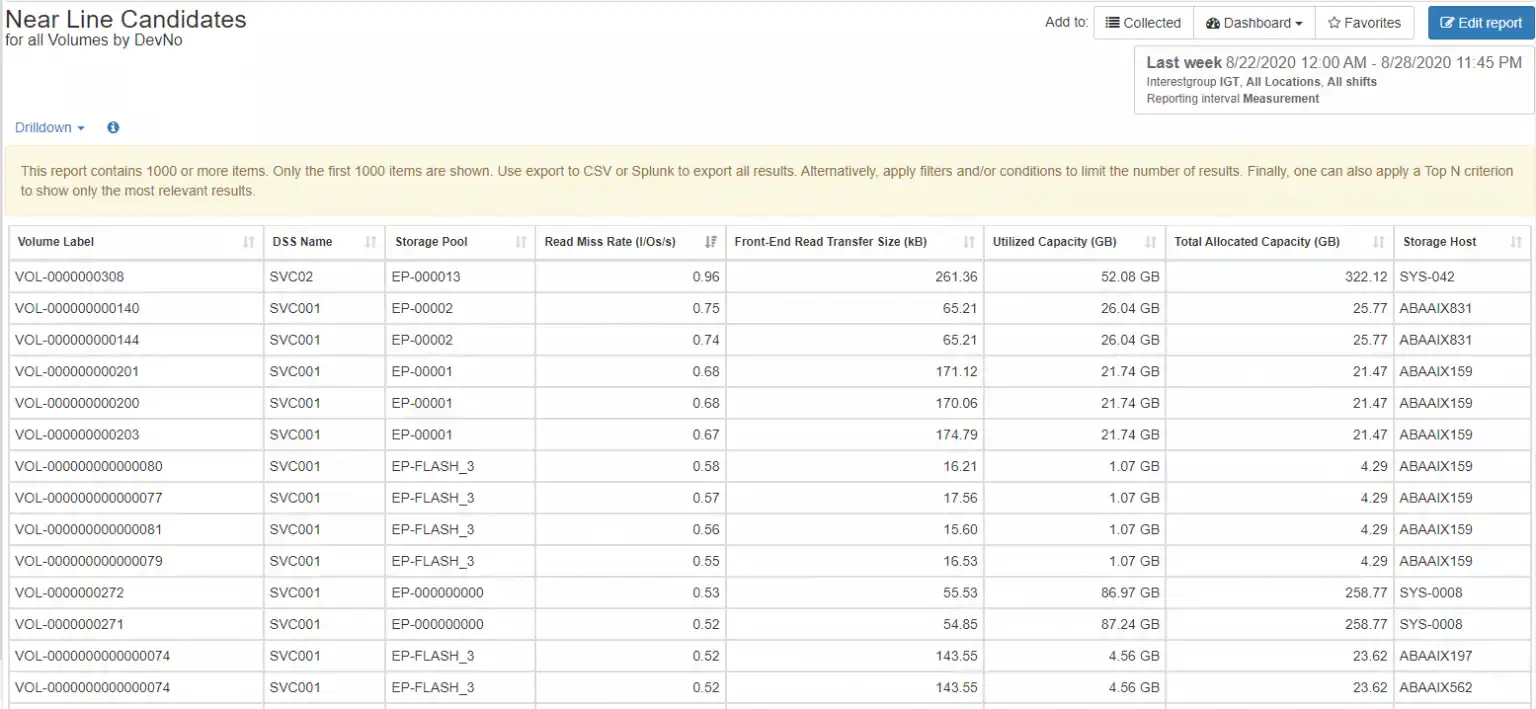
Figure 3: Nearline Candidates
Volumes with Avg. Read Transfer Sizes < 64 KB
Similarly, volumes with average read transfer sizes less than 64KB and a high read miss I/O rate are ideally suited for flash media. Figure 4 is an example of a report that can help you identify those as well.
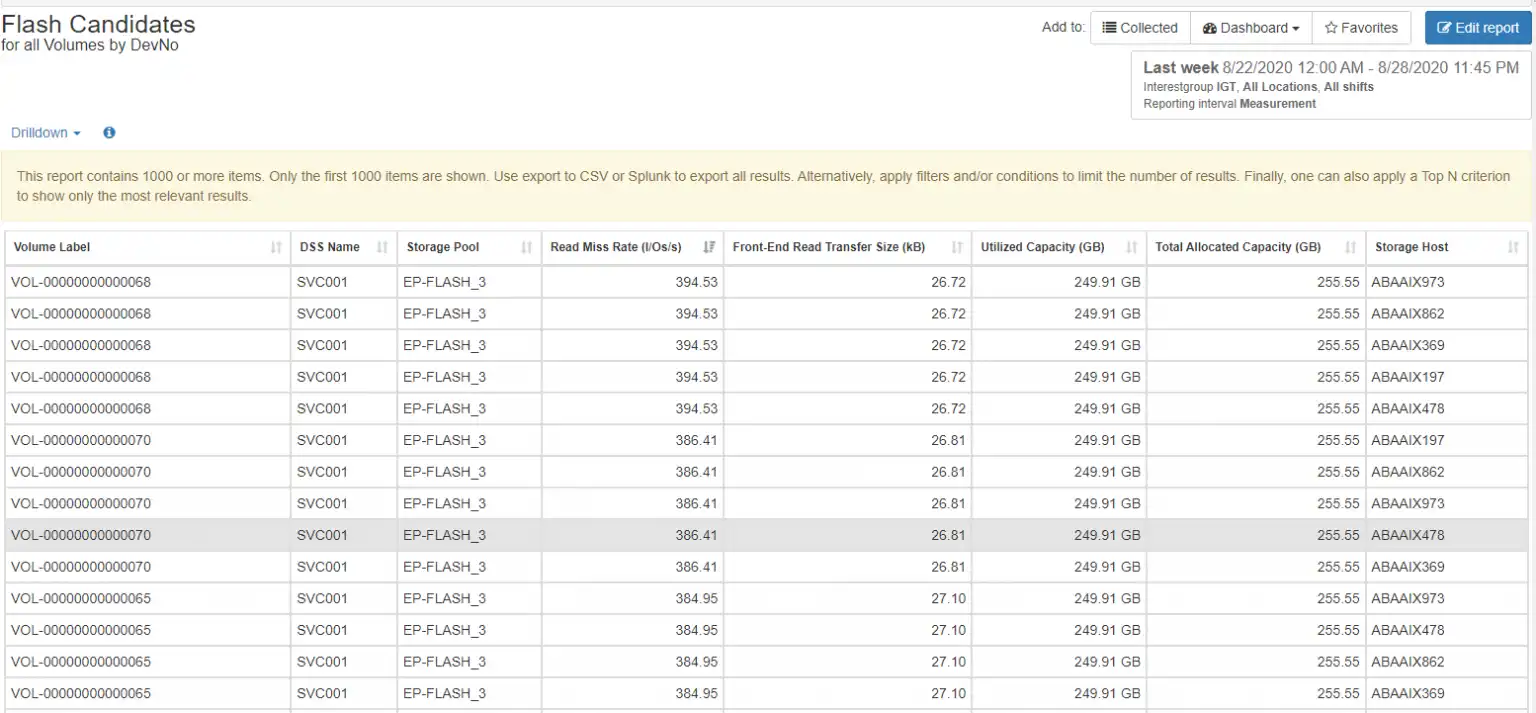
Figure 4: Flash Candidates
Volumes with Avg. Read Transfer Size < 32KB
Finally, volumes with average read transfer size of less than 32KB are ideal for being placed on storage pools that have compression enabled. This may vary depending on your hardware platform. IntelliMagic Vision can identify these volumes as well as shown in Figure 5.
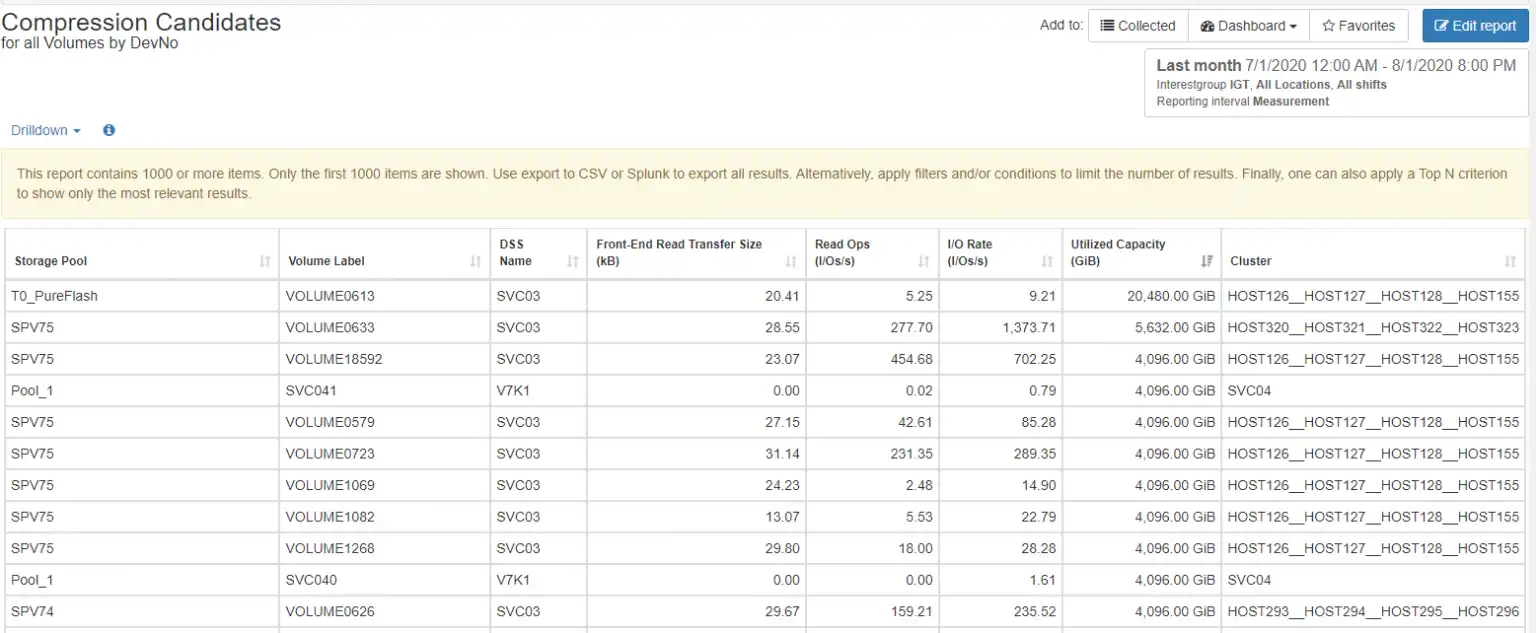
Figure 5: Compression Candidates
Bask in the Glow of a Job Well Done
Much like a well-done house move, identifying volumes that can be deleted, placing the remaining volumes on suitable storage tiers, and ensuring the most efficient space utilization by identifying volumes that are ideal for compression is both satisfying and a relief to stress points that might have been piling up. Now with the right things in the appropriate place, there should be no more sharp edges to hit you in the shin in the dark – if only moving house was as easy as a few mouse clicks… Does your storage capacity need a little tidying up?
This article's author
Share this blog
Related Resources
Should There Be a Sub-Capacity Processor Model in Your Future? | IntelliMagic zAcademy
In this webinar, you'll learn about the shift towards processor cache efficiency and its impact on capacity planning, alongside success stories and insights from industry experts.
Easy Storage Capacity Forecasting and Planning
By utilizing an interactive GUI interface with an advanced AI-based statistical analytics engine, IntelliMagic Vision for SAN provides a simple but powerful means to forecast your storage capacity at multiple levels.
Overcoming Capacity Management Challenges for Accurate Burn Rates and Forecasting
Discover how to overcome capacity management challenges for more accurate capacity forecasting and burn rates.
Request a Free Trial or Schedule a Demo Today
Discuss your technical or sales-related questions with our availability experts today

 Tim Chilton
Tim Chilton